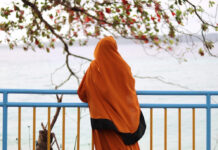Neoclassicism and romanticism are two schools of thought that are frequently seen as being in opposition to one another. The primary distinction between neoclassicism and romanticism is that neoclassicism places a greater emphasis on objectivity, order, and restraint, whereas romanticism places a greater emphasis on emotion and imagination. The movement of romanticism had a significant impact on many different issues, styles, and ideas. On the other hand, the ancient Greek and Roman art periods served as inspiration for the neoclassical style, which pays homage to their styles.
What is Neoclassicism?

The classical era served as a source of inspiration for the Neoclassicism literary movement, which emerged in the 19th century. The authors of this time period attempted to write in a manner similar to that of the Greeks and Romans. This movement, which can be seen of as a pushback against the Renaissance, was active roughly between the years 1660 and 1798. Some well-known authors who wrote in the neoclassical style include John Milton, Alexander Pope, Voltaire, John Dryden, Jonathan Swift, and Daniel Defoe. This movement has given rise to a number of prominent literary forms, including parody, essays, satire, novels, and poetry.
The ideas and structures of classical antiquity served as the inspiration for neoclassicism. The characteristics that were most prominent in neoclassical literature were things like structure, restraint, simplicity, decorum, order, logic, and objectivity. These were the classical virtues that neoclassical authors loved and tried to emulate in their own writing.
Throughout most cases, this movement can be segmented into three time stages:
- The time period, which spans from 1660 to 1700, is known as the “Restoration Age” because it commemorates the return of the British King to the throne. The Classical era had a significant impact on it.
- The period, which spans from 1700-1750, is known as The Augustan Age. The Augustans felt that their time period was comparable to the reign of Augustus Caesar in Rome, which was a time of peace and stability. This belief persisted throughout the Augustan Age.
- The period, which spans from 1750-1798 is known as the Age of Johnson. It is also known as the Age of Shift, this era was characterised by the impending Romantic ideas and influence as well as the gradual transition from neoclassical values to romantic ones.
What is romanticism?

The period that is referred to as the Romantic Era in literature spans from around 1789 to 1832. One way to think of this is as a push-back against the industrial revolution and neoclassicism. The focus on imagination, subjectivity, and emotion is the most distinguishing characteristic of this artistic style. French Revolution have had a profound impact on the thinking and writing styles.
Some of the most well-known authors that have contributed to the Romantic Movement are William Wordsworth, John Keats, Lord Byron, Samuel Taylor Coleridge, Walter Scott, Percy Bysshe Shelley, Mary Shelley, and William Blake. The medieval and baroque centuries provided this artistic style with its primary sources of inspiration, and its primary subjects were nature, legends, pastoral life, and supernatural elements.
German Sturm und Drang Movement
The German Sturm und Drang (Storm and Stress) movement, which prioritised instinct and sensation over realism, was a driving force behind the development of romanticism. This trend that was a precursor to romanticism can be traced back to Germany and was crucial in its development. It placed an emphasis on human expressions through writing, music, and visual art. The movement emphasised the primacy of a single person’s perspective. When it comes to visual expressions, Sturm und Drang can be seen in the form of sketches of storms and wrecks that demonstrate the reality that is fashioned by nature.
Brushing up the dichotomy of Neoclassicism and Romanticism
| Neoclassicism | Romanticism | |
| Age | 1660 – 1798 | 1789 – 1832 |
| Emphasis | Order, structure, objectivity | Emotion, imagination, subjectivity |
| Genesis | Classical Age (Romans and Greeks) | Medieval and Baroque Eras |
| Concept | Age of Reason | Age of Passion |
| Tonality | Filled with reason and calmness | Filled with passion and rebellion |
| Pioneers | Alexander Pope, Jonathan Swift, John Milton, Daniel Defoe, John Dryden, etc | John Keats, Lord Byron, Samuel Taylor Coleridge, Walter Scott, Percy Bysshe Shelley, William Wordsworth, etc |
Example of the writing styles of the authors of Neoclassicism and Romanticism
|
Neoclassical |
Romantic |
| Alexander Pope |
William Wordsworth |
|
“Tis more to guide than spur the Muse’s Steed; |
“For all good poetry is the spontaneous overflow of powerful feelings: and though this be true, Poems to which any value can be attached were never produced on any variety of subjects but by a man who, being possessed of more than usual organic sensibility, had also thought long and deeply.” |





Can you be more specific about the content of your article? After reading it, I still have some doubts. Hope you can help me. https://www.binance.info/sv/join?ref=DB40ITMB